- Country Areas
- Methods and indices
- Explore oral health
- About CAPP
-
- Bank of Ideas
- Nepal - Basic Oral Health Training Programme for the Health Workers of Ramechhap District
- Nepal - Manang Dental Camp Report
- Nepal - School based oral health project in remote Timal Besi
- Nepal - Training Female Community Health Volunteers in Oral Health Education
- United Kingdom - Fissure Sealant Programme for Schoolchildren in Wales
- United Kingdom - Boost Better Breaks - A School based Public Health Programme in Northern Ireland
- United Kingdom - Training programme for nursing staff on oral health care of elderly residents of nursing homes in Scotland
- United Kingdom - An Oral Cancer Awareness Campaign Programme, Scotland
- United Kingdom - Designed to Smile - Promoting Better Oral Health and Delivering Fluoride Supplementation to Children in Wales
- United Kingdom - Childsmile – the national child oral health improvement programme for Scotland
- Sweden - A school-based fluoride mouth rinsing programme
- Kenya - The Eric Dental Clinic
- Madagascar - The Vezo Hospital
- Nigeria - A School based oral health education programme for Children
- Seychelles - Dental Public Health Programmes
- South Africa - Hammanskraal Project
- South Africa - Phelophepa Healthcare Train
- Afghanistan - Dental Relief Project, Kabul
- Australia - Water fluoridation in remote Aboriginal communities
- Australia - An Aboriginal health and a Government school dental service in South Australia
- Austria - Oral Health Promotion Programme for preschool children, Vorarlberg
- Antigua and Barbuda - School based Fluoride rinse programme, 1989-1998
- Brunei Darussalam - Mission Report 1998 on training course in oral health survey method
- Cambodia - Mobile dental care for schoolchildren in Sihanoukville
- Cambodia - Outreach programme for improving oral health of under privileged children in Sihanoukville
- Cambodia - Oral Health promotion in schools in Kampong Cham
- Namibia - The "Smiling Schools" project
- South Africa - An Atraumatic Restorative Treatment (ART) Project: Activity Report
- South Africa - An Atraumatic Restorative Treatment (ART) in a Mobile Dental Clinic, Johannesburg
- Tanzania, United Republic of - The Outreach programme in primary schools around the Dar es Salaam area
- Argentina - An Oral Health Preventive Programme for School Children
- Brazil - Atraumatic Restorative Treatment for a disadvantaged Brazilian Community
- Chile - A school based oral health programme in Cabildo (2008)
- Chile - Fluoridated milk programme for rural primary school children
- Chile - Fluoridated Powdered Milk Programme
- El Salvador - Community-based programme for prevention of dental caries among children
- Honduras - Oral Health Education and Care for a resource poor Honduran community
- Honduras - Oral Health and Care in Delicias
- United States of America - Oral Health Programme for Navajo Indians in Pine Hill, New Mexico
- United States of America - Oral health Education and Sealant programme for West Philadelphian Schoolchildren
- Kuwait - A school based oral health programme during 1986-1997
- Kuwait - Community Based Schoolchildren's Oral Health Programmes 1985 -1998
- Kuwait - School Oral Health Programme (1982-2011)
- Lebanon - Final Report, a baseline survey of oral health situation and fluoride levels in drinking water (2000)
- Saudi Arabia - An ongoing oral health promotion programme
- Saudi Arabia - The Celebration of the 20th anniversary of the accession to the throne of King Fahd Ibn Abdul-Aziz
- Saudi Arabia - Oral Health Education Programme for schoolchildren in the Holy City of Mecca
- Sudan - An Oral Health Promotion through live art in Sudan
- Syrian Arab Republic - An ongoing oral health preventive programme
- United Arab Emirates - Assignment Report 1995-96 with recommendations to build a comprehensive oral health care
- United Arab Emirates - Dental Public Health Programs implemented by Dental Services Department, Dubai
- United Arab Emirates - MY SMILE” - tooth brushing program for school children in Dubai, UAE.
- Bulgaria - A community based milk fluoridation programme 1988-1993
- Bulgaria - The clinical effect of milk fluoridation for school children
- Croatia - Healthy Smile Day
- France - A School Based Oral Health Education Programme
- Germany - Third German Oral Health Study - 1997, Summary
- Germany - An Oral health programme for children attending kindergartens in two Counties in Northern Hesse
- Romania - Fluoride mouth rinsing Programme in Schools in Constanta and Iasi connties (2001-2010)
- Russian Federation - Programme focusing educating parents of infants on the prevention of caries, Moscow
- Sweden - An oral health programme for preschool children in a multicultural city area
- Sweden - The Oral Health Lift - An Oral Health Promotion Programme for the Homeless and other socially vulnerable people in Malmö
- Sweden - School based fluoride varnish application programme
- Turkey - Ongoing Atraumatic Restorative Treatment (ART) Programme in some rural areas
- Turkey - A reliable and practical dental preventive/education program model for Turkey - "brushes in the bags, teeth on the healthy-way"
- India - Training oral health workers to provide basic dental care in Ladakh
- Indonesia - Affordable toothpaste project (WHO) in West Kalimantan
- Sri Lanka - School based public health programme in Jaffna
- Sri Lanka - ART Training Programme for School Dental Therapists, Jaffna
- Sri Lanka - An oral cancer screening project in tea estates
- Sri Lanka - Oral Health Camp in rural area
- Sri Lanka - Dental public Health Programmes conducted by the Population Oral Health Unit (Community Dental Unit), Dental Institute, Colombo
- Thailand - The Royal Mobile Dental Unit project
- Thailand - School based oral health programme for children in Southern Thailand
- China - A campaign on "Love Teeth Day" celebrated nation-wide each year
- China - Milk fluoridation project (WHO) in Beijing
- China - An oral health education programme in Wuhan City
- China - An oral health education and supervised tooth brushing programme in kindergartens
- Japan - A school-based fluoride mouth rinse programme for preschool children
- Japan - Visual Support Material for Children with Autism in order to Master Toothbrushing Skills
- Viet Nam - School-based Oral Health Programme
- Viet Nam - Mission report 1999 with recommendation for oral health training
- Viet Nam - Oral health program in South Central Vietnam
- Vanatu - Mission Report on Oral Health
- Tonga - Mission Report 1997 reviewing the oral health programme
- Tokelau - Mission Report 1999 on recommendation to improve oral health
- Philippines - Mission Report 1998 on planning and implementing a national oral health survey
- Philippines - The Essential Health Care Package- “Fit for School” programme
- Mongolia - Mission Report 1999 with recommendations to improve oral health (1)
- Malaysia - reports from Oral Health Division
- Lao PDR - Caries prevalence and some caries related factors for 12-year-old children from Vientiane and Luang Prabang provinces
- Lao PDR - Estimating the fluoride concentration in the drinking waters
- Korea, Republic of - Community based caries prevention programme in a suburban area
- Sri Lanka - An ongoing school-based ART Programme
- Vanuatu - Gudfala Tut Skul Program (Healthy Tooth School Program)
- Estonia - Suukool, a mouth school
- Palestine - Integrating the WHO Health Promoting School Concept into National School Oral Health
Lao PDR - Estimating the fluoride concentration in the drinking waters
Lao PDR - Estimating the fluoride concentration in the drinking waters
by GL. Tayanin*, Faculty of Odontology, Malmö University, Sweden
Introduction
The concentration of fluoride in drinking waters is one of the factors strongly influencing the dental caries situation globally. Data on fluoride sources in Lao People's Democratic Republic is only available to a limited extent (1). The aim of this study was to collect drinking water samples from some different parts of Laos using a standardised method for fluoride determination and eventual pilot fluoride mapping of some provinces of the country. This information would be very useful in the planning and implementation of oral health primary prevention programmes in the future.
Materials and Method
Drinking water samples were collected from different parts of the country in July 1999.
Sample Collection:
Samples were collected from 50 different samples of drinking water, representing big and small cities and villages. Drinking water from each source (see below) such as bottled, tap, hand pump, springs, stream, lake and rivers were collected in clean and dry 60 ml polypropylene containers. Each sample was labelled giving the time, date, site and source. When collecting tap water, the tap was allowed to run for a few minutes so as to collect an evenly distributed sample of water.

The starting point of the water sample collection was the capital Vientaine which belongs to the Vientaine Municipality. Water samples were collected from tap, bottled water, ice cubes and the river (Table 1). From here moving north, samples were collected from the Vientaine Province, then from the mountainous province of Xiengkhouang (2000 m above sea level), then going northwestwards from Luang Prabang province (500-1000 m above sea level) and Oudomxay province (1000 m above sea level) and returning to the capital.

The samples were analysed for fluoride concentration using standard methods in the Department of Cariology, Faculty of Dental Sciences, University of Malmö Sweden.
Analysis of fluoride in water samples:
After collection the samples were stored in a refrigerator. The F- concentration was analysed two weeks later by using an ion-specific electrode and difference electrode, Fluoride Electrode Instrument (Orion).
- Prepared standard solution ranging between 1.0 ppm - 0.1 ppm were chosen presuming that the unknown sample concentration of fluoride may fall in between these two standards.
- TISAB (Total Ionic Strength Adjustment Buffer), was added to the standard fluoride solutions to adjust the pH of the sample and to break up complexes.
- The instrument was calibrated with the two standard solution.
- To each water sample TISAB III was added in correct ratio.
- To determine the F- concentration, the electrode was left to stand in the solution for 3 minutes.
- After 3 minutes the F- concentration in the water sample was read directly from the digital display meter.
For each sample, two fluoride readings were taken. 43 (86%) of the 50 samples showed no difference between the two measurements. 0.01 difference was seen in 3 (6%) of the samples, 0.02 and 0.03 differences were observed in 1 (2%) and 3 (6%) samples respectively. Only the first reading was included in the study.
Results
The main drinking water source is the Mekong river in Vientiane municipality. Usually water is boiled before drinking in Laos. Highest concentration of fluoride was recorded in the Luang Prabang province, in the water sample from a hand pump which was 0.512 F- ppm. The lowest level of 0.013 F- ppm was observed from a stream in the Nakanthung village, Vientiane province, and from bottled water in Moung Xay district in Oudomxay province.
Fluoride concentrations (ppm) in various water sources in different provinces in Laos, July 1999
Province: Vientiane Municipality
| District/Place | Type of Source | No. of samples | F- conc. range (PPM) | F- conc. mean (ppm) |
|
Vientiane Mun./Mekong R
|
River | 1 | - | 0.101 |
|
Chanthabury/Saylom Vil
|
Tap | 1 | - | 0.089 |
|
Chanthabury/Nam pu Square |
Tap | 3 | - | 0.114 |
|
Chanthabury/Mahosot Hosp |
Tap | 1 | - | 0.111 |
|
Chanthabury/Market |
Bottled | 1 | - | 0.123 |
|
Chanthabury/Market |
Ice Cubes | 1 | 0.038-0.039 | 0.039 |
|
Sisattanak/Dongpalan Vil |
Tap | 1 | 0.099-0.110 | 0.105 |
|
Sisattanak/ Sapanthongneau Vil |
Tap | 1 | 0.100-0.117 | 0.109 |
|
Sisattanak |
Bottled | 1 | 0.105-0.140 | 0.118 |
Province: Vientiane
| District/Place | Type of Source | No. of samples | F- conc. range (PPM) | F- conc. mean (ppm) |
| Saythany/NongbuaVil | Lake | 1 | - | 0.015 |
| Saythany/Nakanthung Vil |
Stream |
1 | - | 0.013 |
| Saythany/Prabadaewkhan Vil | Water fall | 3 | 0.010-0.011 | 0.010 |
| Saythany | Bottled | 1 | - | 0.096 |
| Phonesavanh Vil/Nam Ngum | Tap | 1 | - | 0.034 |
| Sikhottabong/Wat Tay Vil | Tap | 1 | - | 0.105 |
| Vang Vieng/Nam Song R. | River | 1 | - | 0.031 |
| Vang Vieng | Spring | 1 | - | 0.034 |
| Vang Vieng | Tap | 1 | - | 0.033 |
Province: Xiengkhouang
| District/Place | Type of Source | No. of samples | F- conc. range (PPM) | F- conc. mean (ppm) |
| Phonesavanh | Tap | 3 | 0.053-0.058 | 0.056 |
| Phonesavanh | Bottled | 2 | 0.052-0.062 | 0.057 |
| Phonesavanh | Hand-pump | 1 | - | 0.022 |
Province: Luang Prabang
| District/Place | Type of Source | No. of samples | F- conc. range (PPM) | F- conc. mean (ppm) |
| Luang Prabang/Mekong R. | River | 2 | 0.082-0.083 | 0.083 |
| Luang Prabang/Nam Ou R. | River | 1 | - | 0.057 |
| Luang Prabang/Tad Khwangsi | Water fall | 2 | 0.043-0.048 | 0.045 |
| Luang Prabang | Tap | 2 | 0.026-0.029 | 0.028 |
| Luang Prabang | Bottled | 2 | 0.026-0.029 | 0.028 |
| Luang Prabang | Ice cuber | 1 | - | 0.026 |
| Luang Prabang/Lakpad Vil | Handpump | 1 | - | 0.512 |
| Luang Prabang/Soub Kong Vil | Tap | 1 | - | 0.084 |
| Moung Ngoi | Tap | 1 | - | 0.127 |
Province: Oudomxay
| District/Place | Type of Source | No. of samples | F- conc. range (PPM) | F- conc. mean (ppm) |
| Moung Xay | Spring | 1 | - | 0.041 |
| Moung Xay | Tap | 3 | 0.014-0.052 | 0.036 |
| Moung Xay | Bottled | 1 | - | 0.013 |

Fluoride Map : showing the fluoride concentrations observed in the water samples taken from some provinces in Laos.
Conclusion
The WHO in 1994 has recommended fluoride levels of 0.5-1.0 mg/l (0.5-1.0 F- ppm) in the drinking water for optimal cariostatic effect, the lower limits for hot climate (as people drink more water) and upper limit for cold climates (2). The concentrations of fluorides in the drinking water observed in this study are below this optimal level. The study tells that one important factor contributing to caries resistance is missing. Should caries-inducing factors increase in Laos, for example the consumption of sucrose and other caries inducing carbohydrates, the need for effective oral health primary preventive programmes is great, greater than if fluoride had been present.
References
Wong Hee Deong, Implementation of the oral health component of the health-promoting school project, mission report, WPRO/WHO, 1997.
Fluorides and oral health, report of a WHO Expert Committee on Oral Health Status and Fluoride Use, 1994, WHO/Geneva.
Acknowledgements
Thanks are due to Dr Khamhoung Prommavongsa, Chief of Dental Service, Mahosot Hospital, Vientiane, for valuable discussions on the oral health situation in Laos.
We also wish to thank profusely Dr Somphone Doangchannalad, Chief of Dental Service, Luang Prabang, Dr Sinsay, Chief of Dental Service Xiengkhouang, Mr Norm Chief of Dental Service, Oudomxay, for their generous and enthusiastic contribuions which enabled us to gain insight on practising dentistry in Laos.
* This project was performed by GL. Tayanin as a Student Research Project at the Faculty of Odontology, Malmö University, Sweden under the guidance of Prof. D. Bratthall and Dr JR. Stjernswärd. Mrs E. Thornqvist was supervising the fluorie determinations in the laboratory.
Water sources
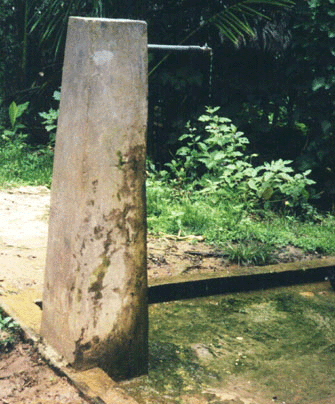
...Water tap standing in the center of Soubkong village, Luang Prabang, providing water to the villagers
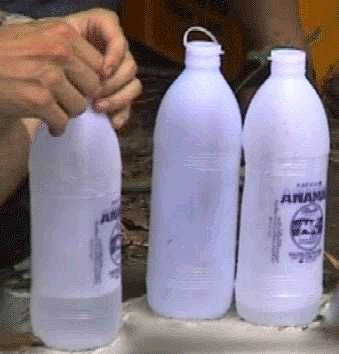
.. Bottled water - Vientiane ..
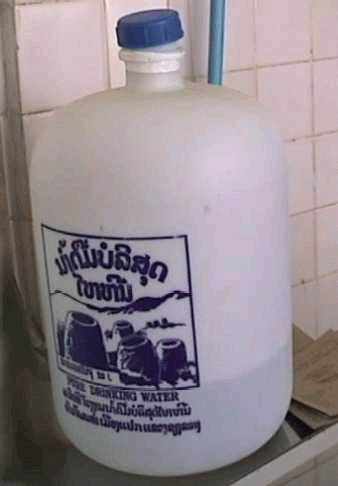
.. Bottled water - in a big bottle - Xiengkhouang ..

...Children pumping water at Lakpad village, Luang Prabang
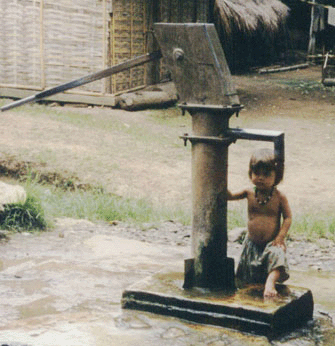
.. Cool ..

...Clear water from the handpump..which is provided for all the villagers
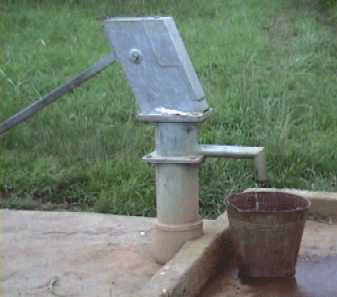
...Another handpump at a hillfoot of the Plaine of Jars, Xiengkhouang
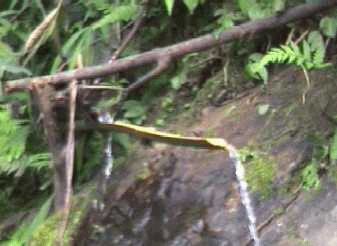
...Running water from a bamboo tube, on the way to Oudomxay
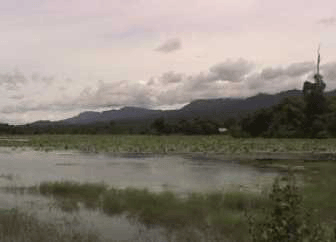
.. Nongbua Lake, Vientiane ..
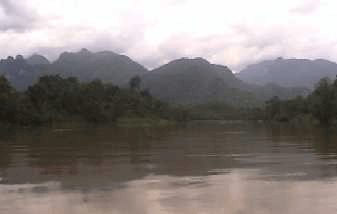
.. Ou River, Luang Prabang ..
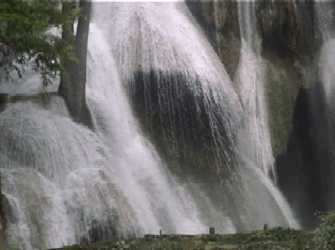
.. Kwangsi Waterfall, Luang Prabang ..
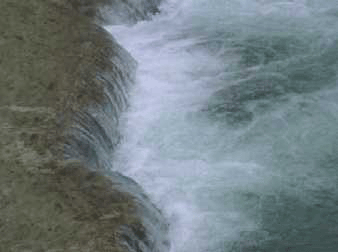
.. Kwangsi Waterfall, Luang Prabang ..
..all photos by D. Tayanin
Water sample collection
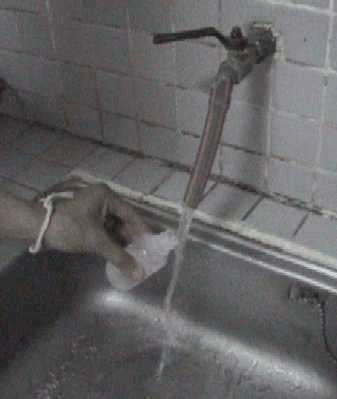
...When collecting tap water, water was allowed to run for a few minutes and then collected in the clean 60 ml plastic bottle. Here collecting water from a tap inside a house.

...from a hand pump, which provides water for people at a foot of the Plain of Jars hill, Xiengkhouang

...from a stream, Vientiane
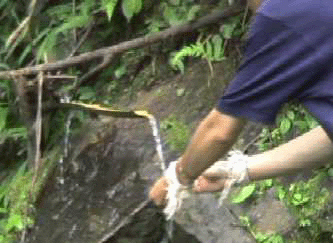
...from a spring which is being directed through open bamboo tube. This spring water is provided on the way to Oudomxay

... from Kwangsi waterfall, Luang Prabang
Province: Vientiane
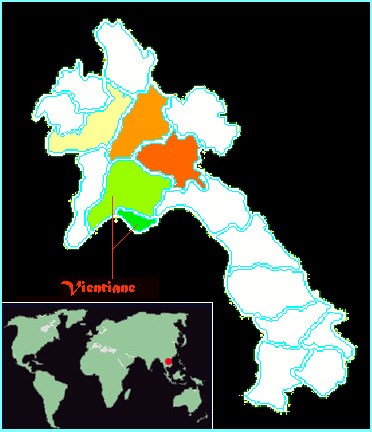
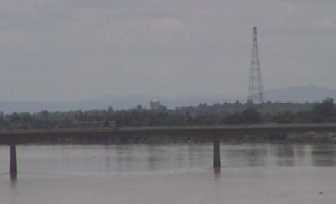
.. Friendships bridge across Mekong River - connecting Laos and Thailand ..
.. Thadeua - Vientiane, taken from Thai-side ..
.. That Luang..
.. Inside Vientiane..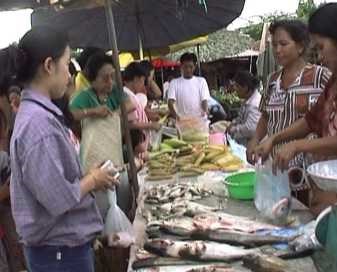
.. How much? ..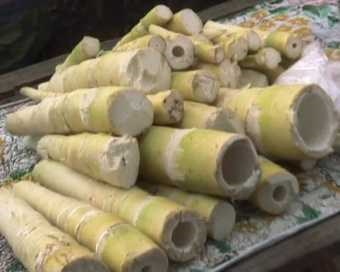
.. Bambooshoots ..
.. Transportation across Song River..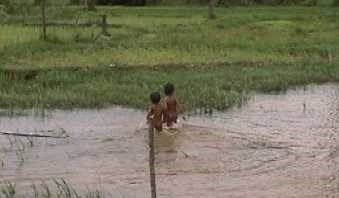
.. Shall we..? ..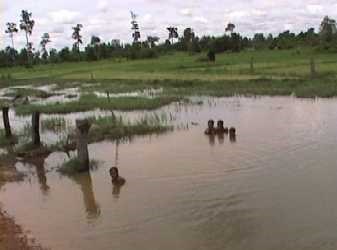
.. Late afternoon - children enjoy bathing ..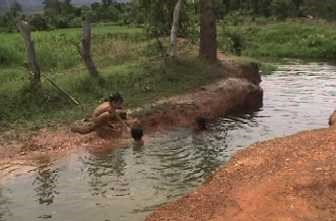
.. Children at the stream ..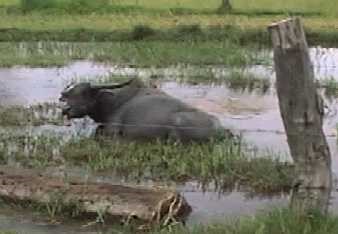
.. Cool ..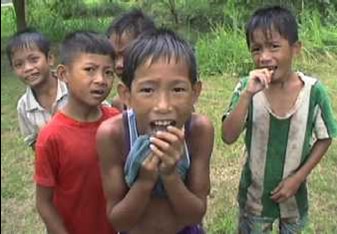
.. Brr..(??) ..
.. Return from paddy ..
.. Kwao Tung - Vangvieng ..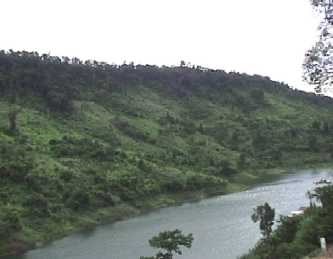
.. At the Ngum River bank ..
All photos by: Damrong Tayanin
Province: Xiengkhouang
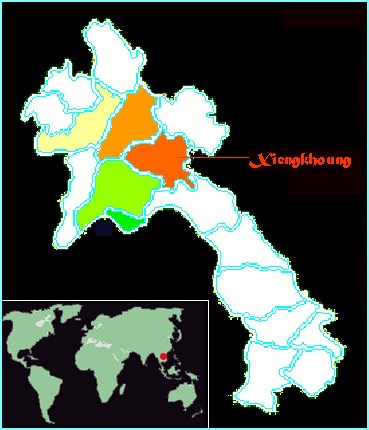

.. At the Plaine of Jars ..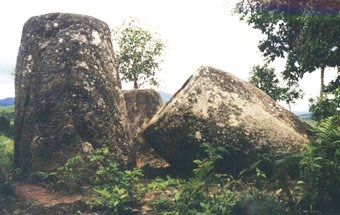
.. Rocky Jars..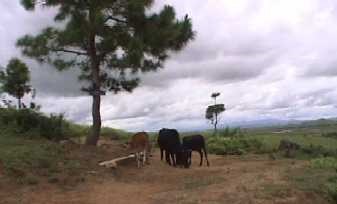
.. On the hill ..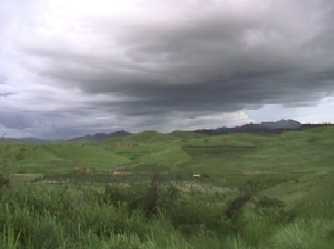
.. Cloudy ..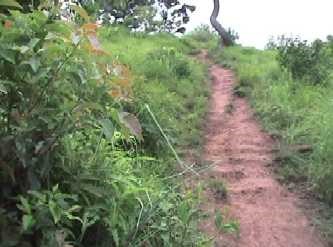
.. up to the hill ..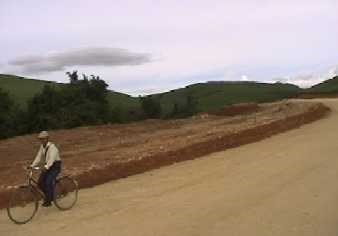
.. On the way ..
All photos by: Damrong Tayanin
Province: Luang Prabang

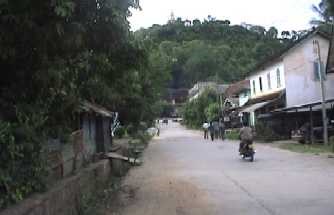
.. Inside Luang Prabang ..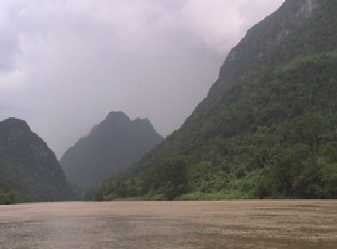
.. Ou River ..
.. Kwangsi waterfall ..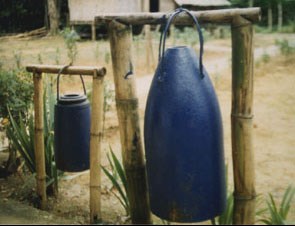
.. Temple bells, Muang Ngoi ..
.. Amm..dinner at the courtyard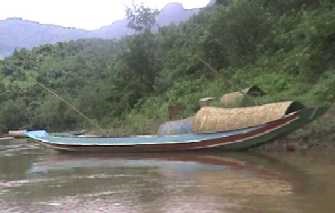
..Fishing boat..
All photos by: Damrong Tayanin
Province: Oudomxay

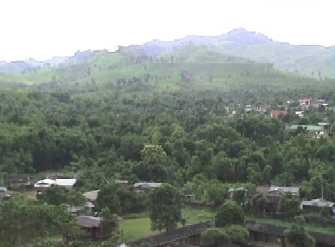
.. Viewing over the town ..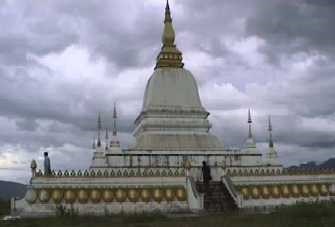
.. Pagoda standing on the hill ..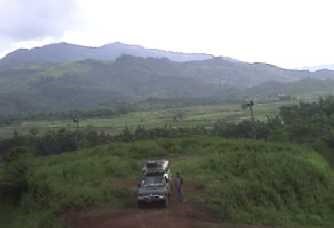
.. Four wheels waiting at the foot of the hill ..
.. Kammu village situated on the mountain slope ..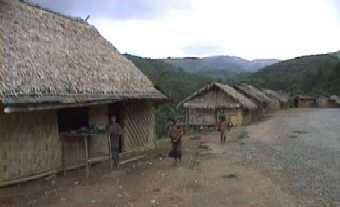
.. Kammu village ..
.. Kammu girl carry the younger one on her back ..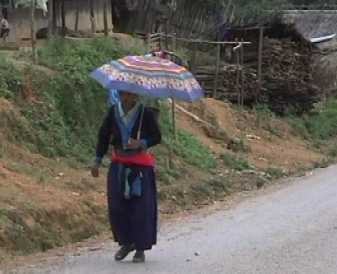
.. A Hmong - on the mountain ..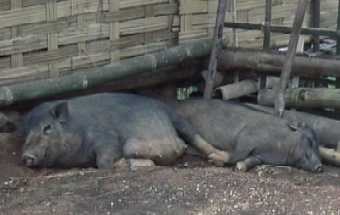
.. ZZZ ..
All photos by: Damrong Tayanin
